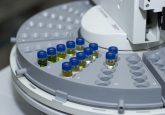2. What remains the greatest challenge in identifying metabolites? How can these be overcome?

Adam Rosebrock: “I mentioned that we do not have a complete manifest of compounds in the cell. This doesn’t stop either new or seasoned metabolomicists from blind searching one of the myriad databases that are a mouse-click away. Of note, there seems to be an unspoken race between databases resulting in ‘more compounds’ trumping ‘more relevant compounds’ as a specification of merit. It’s tempting to promote an unknown mass spectral feature to a named known by plugging in an exact mass (“what else could possibly have the same mass out to millithompson precision?”) or LC fragmentation pattern (“I can’t imagine another compound of this exact mass that yields both a 79, 97 fragment and loses 44!”). This sort of thinking leads to best-intentioned authors claiming to have found Prozac in yeast cells or decades-discontinued veterinary drugs in patient urine. Those compounds aren’t present, but a blind database search will tell the unwitting investigator that they match a spectral pattern!
Far too few labs confirm their putative compound identities using authentic chemical standards. It’s time consuming, expensive and unglamorous work, but absolutely essential to avoid potentially spectacular errors.”
Dajana Vuckovic: “The greatest challenge in identifying metabolites is chemical diversity of molecules that may be present in a given biological sample. For example, let us consider human plasma. It contains not only human and various microbial metabolites (which may or may not be further processed by human metabolism) but exogenous compounds such as food components, toxins, environmental contaminants, personal care compounds, and pharmaceuticals, just to name a few. The presence of these compounds will vary from sample to sample as well as with time. Many of these compounds will also have many possible isomers thus making unequivocal identification a very challenging task. To overcome these challenges, better metabolite libraries and databases will help but we also need to improve our fundamental understanding of the CID fragmentation processes so that in silico tools can become even more helpful.”
Ian Wilson: “One challenge is the size of the problem and the lack of available pure authentic standards to match against potential structural ‘hits’. The time needed to isolate, purify and fully structurally characterize low concentration metabolites in biological fluids should never be underestimated.
How can these be overcome? Persistence, hard work and patience.”
Fengguo Xu: “Generally, confident identification of analytes often relies on the purchase, synthesis or isolation of pure authentic standards. However, it is estimated that only 2.5% of metabolites have commercially available standards, which hampers positive identification.
High-resolution mass spectrometry with electrospray ionization has significantly improved our ability to assign a molecular formula to each detected molecular ion, based on accurate mass and natural isotope abundance. With the accessibility of databases for metabolomics, more and more metabolites have been putatively identified. Remarkably, chemical derivatization-based LC–MS strategy might facilitate the identification of key metabolites. The derivatization procedure is targeted to sub-metabolites with specific functional groups, achieving enhanced efficiency and reliability of identification via databases.”




